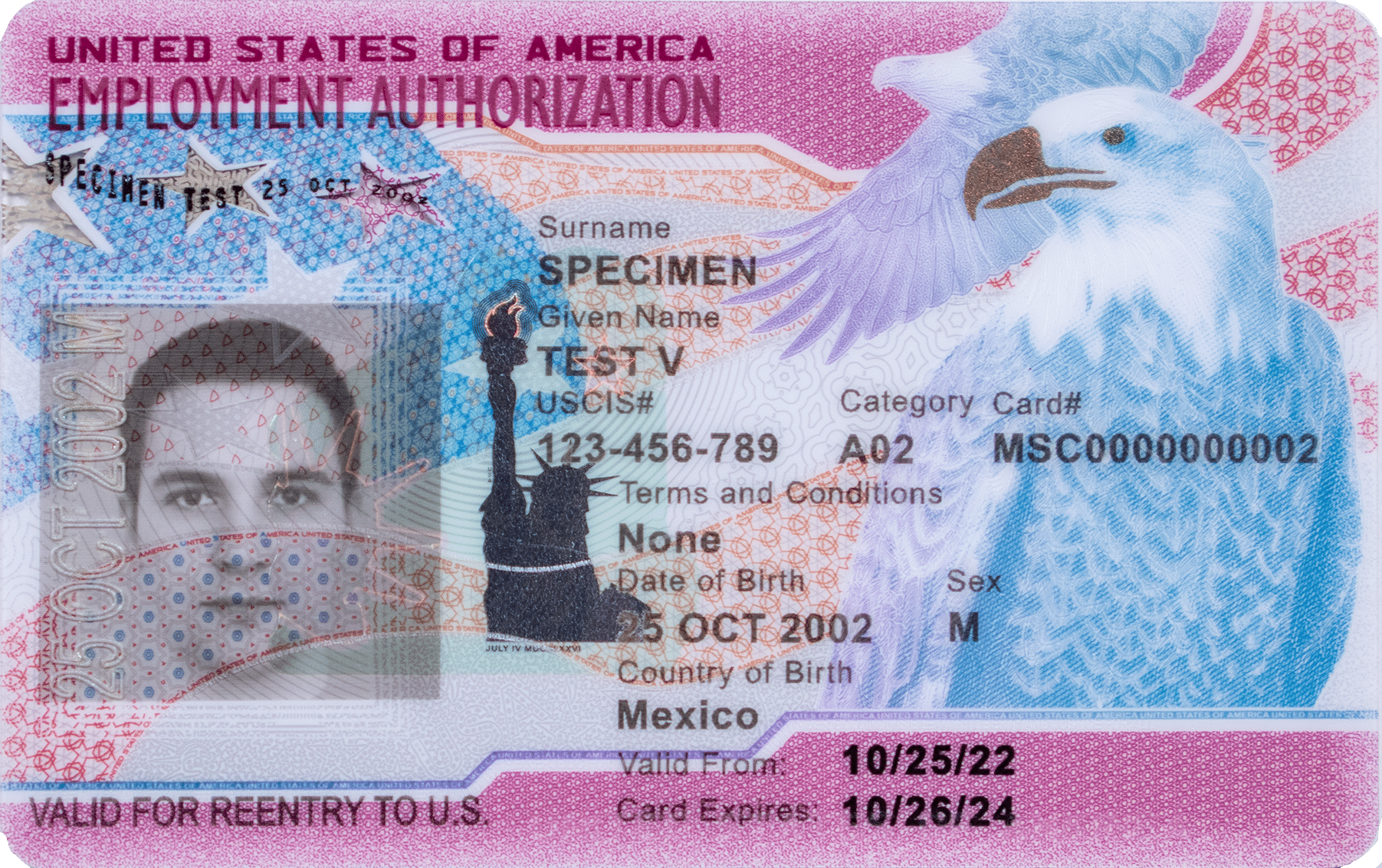Getting an Employment Authorization Document (EAD) card is a crucial step for many immigrants in the United States, as it grants them the legal right to work. However, the timeline for receiving this essential document can be mysterious and filled with uncertainty. In this article, we aim to demystify the timeline and provide you with valuable insights into the EAD card application process.
Whether you’re applying for an EAD card for the first time or renewing an existing one, understanding the expected timeline is vital for proper planning. By examining the different factors that can influence the processing time, such as USCIS workload, application completeness, and potential delays, we will give you a clear picture of how long you can expect to wait.
Join us as we explore the intricacies of the EAD card application process and provide you with practical tips and strategies to expedite your application and avoid unnecessary delays. By the end of this article, you’ll be equipped with the knowledge and certainty you need to navigate the path to obtaining your EAD card seamlessly.
What is an EAD card?
An Employment Authorization Document (EAD) card, also known as a work permit, is a document issued by the United States Citizenship and Immigration Services (USCIS) that grants non-U.S. citizens the legal right to work in the country. It serves as proof that the holder is authorized to accept employment in the United States.
The EAD card is essential for individuals who are not U.S. citizens or lawful permanent residents but are eligible to work in the country based on their immigration status. It is commonly used by foreign students, refugees, asylees, and individuals seeking temporary employment-based visas.
Obtaining an EAD card is a crucial step for immigrants who wish to pursue employment opportunities in the United States. Without this document, individuals may face legal consequences for working without authorization.
Importance of an EAD card
The EAD card holds significant importance for individuals who are not U.S. citizens or lawful permanent residents. It provides them with the legal right to work in the United States and opens up opportunities for career growth, financial stability, and integration into American society.
For foreign students studying in the United States, an EAD card allows them to gain practical experience through internships, co-op programs, and other employment opportunities related to their field of study. It enhances their educational experience and increases their chances of securing employment in their chosen field after graduation.
For refugees and asylees, an EAD card is a lifeline that helps them rebuild their lives in a new country. It allows them to find employment and support themselves and their families, providing a sense of stability and independence.
Additionally, the EAD card is crucial for individuals with temporary employment-based visas, such as H-1B or L-1 visa holders. It enables them to work for their sponsoring employer and contribute to the U.S. economy while maintaining their legal status.
Overall, the EAD card plays a vital role in the lives of immigrants, providing them with the necessary documentation to pursue employment opportunities and contribute to the United States.
EAD card processing times
The processing time for an EAD card can vary depending on various factors. The United States Citizenship and Immigration Services (USCIS) is responsible for reviewing and approving EAD card applications, and their workload can significantly impact the processing times.
On average, USCIS aims to process EAD card applications within 90 days. However, this is not a guarantee, and the actual processing time can be shorter or longer depending on several factors.

Factors that affect EAD card processing times
Several factors can influence the processing time for an EAD card application. Understanding these factors can help applicants manage their expectations and plan accordingly. Here are some of the key factors that can affect EAD card processing times:
1. USCIS Workload: The volume of applications received by USCIS can impact processing times. If there is a high number of applications, it may take longer for USCIS to review and approve them.
2. Application Completeness: Submitting a complete and accurate application is crucial for avoiding delays. Incomplete or incorrect applications may be rejected or require additional documentation, leading to longer processing times.
3. Background Checks: USCIS conducts thorough background checks on EAD card applicants to ensure eligibility. These checks can take time, especially for individuals with complex immigration histories.
4. USCIS Policy Changes: Changes in USCIS policies or procedures can impact processing times. It is essential to stay updated on any policy changes that may affect EAD card applications.
5. COVID-19 Pandemic: The ongoing COVID-19 pandemic has had a significant impact on USCIS operations and processing times. Delays may occur due to reduced staffing, social distancing measures, or other pandemic-related factors.
Average processing times for different EAD card categories
The processing times for EAD card applications can vary depending on the category under which the application is filed. Here are the average processing times for some common EAD card categories:
1. Form I-765, Application for Employment Authorization (based on eligibility categories):
– Asylum-based: 150 days
– Adjustment of Status-based: 4 to 6 months
– Temporary Protected Status (TPS)-based: Varies depending on the designation
2. Form I-765, Application for Employment Authorization (based on nonimmigrant statuses):
– H-4 dependent spouses: 3 to 5 months
– L-2 dependent spouses: 3 to 5 months
– F-1 students seeking Optional Practical Training (OPT): 3 to 5 months
Please note that these processing times are approximate and subject to change. It is always advisable to check the USCIS website for the most up-to-date information.
Expedited EAD card processing
In certain circumstances, applicants may be eligible for expedited processing of their EAD card applications. USCIS allows for expedited processing in cases where there is a severe financial loss to the applicant, an emergency situation, or other compelling reasons.
To request expedited processing, applicants must demonstrate that they meet the specific criteria set by USCIS. This may require providing supporting documentation and a detailed explanation of the urgency or hardship involved.
It is important to note that USCIS has the sole discretion to grant or deny requests for expedited processing. While expediting an EAD card application can significantly reduce the processing time, it is not guaranteed.
Common reasons for EAD card processing delays
Despite efforts to expedite the processing of EAD card applications, delays can still occur. Here are some common reasons for processing delays:
1. Incomplete or Incorrect Application: Failing to provide all the required information or submitting incorrect information can result in delays. It is crucial to carefully review the application instructions and ensure all fields are completed accurately.
2. Request for Additional Evidence: USCIS may request additional documentation or evidence to support an EAD card application. Failure to provide the requested documents within the specified timeframe can lead to processing delays.
3. Background Checks: USCIS conducts comprehensive background checks on EAD card applicants, which can take time. If there are any issues or discrepancies in the applicant’s records, additional review may be required, resulting in processing delays.
4. Administrative Errors: Mistakes made by USCIS or other administrative errors can cause delays. These errors may include misplacing or misrouting application materials, technical glitches, or other unforeseen circumstances.
Tips to expedite the EAD card application process
While the processing time for an EAD card application is ultimately determined by USCIS, there are several steps applicants can take to help expedite the process:
1. Submit a Complete and Accurate Application: Ensure that the application is complete and accurate, including all required supporting documents. Double-check all information before submission to minimize the chances of USCIS requesting additional evidence or returning the application.
2. Use USCIS Online Tools: USCIS provides online tools, such as the Case Status Online portal, to track the progress of an EAD card application. Regularly check the status of your application for any updates or requests for additional information.
3. Expedite Request (if eligible): If you meet the criteria for expedited processing, submit a request to USCIS with supporting documentation explaining the urgency or hardship involved. Be sure to follow the specific instructions provided by USCIS for requesting expedited processing.
4. Contact USCIS for Inquiries: If your application has been pending for an extended period without any updates, consider reaching out to USCIS for an inquiry. Use the USCIS contact information available on their website and provide them with your application details for assistance.
5. Seek Legal Assistance (if necessary): If you encounter significant delays or issues with your EAD card application, it may be beneficial to seek legal assistance from an immigration attorney or qualified immigration professional. They can provide guidance, address any concerns, and advocate on your behalf if needed.
Conclusion: Understanding the timeline for obtaining an EAD card
Obtaining an Employment Authorization Document (EAD) card is a crucial step for many immigrants in the United States. While the timeline for receiving an EAD card can be uncertain, understanding the factors that affect processing times and following the tips provided can help applicants navigate the process more smoothly.
By demystifying the timeline for obtaining an EAD card and providing practical insights and strategies, this article aims to empower applicants with the knowledge and confidence they need to successfully navigate the application process. Remember to stay informed, plan ahead, and be proactive in ensuring a seamless experience on your journey to obtaining an EAD card and pursuing employment opportunities in the United States.






